 Laurel Alexander, Education & Training on the Internet: An essential source for students, teachers and education providers, Plymouth: Internet Handbooks, 2000, pp. 192, IBSN 1840253460. Guide to online resources for students and tutors. Exstensive listings of online courses in UK and abroad.
Laurel Alexander, Education & Training on the Internet: An essential source for students, teachers and education providers, Plymouth: Internet Handbooks, 2000, pp. 192, IBSN 1840253460. Guide to online resources for students and tutors. Exstensive listings of online courses in UK and abroad.
 Tom Boyle, Design for Multimedia Learning, London: Prentice Hall, 1997, pp.240, ISBN 0132422158. Software and media for creating learning programs. Slightly dated now, but sound on basic principles.
Tom Boyle, Design for Multimedia Learning, London: Prentice Hall, 1997, pp.240, ISBN 0132422158. Software and media for creating learning programs. Slightly dated now, but sound on basic principles.
 Stephanie Browner, Stephen Pulsford, and Richard Sears, Literature and the Internet: A Guide for Students, Teachers, and Scholars, London/New York: Garland, 2000, pp.191, ISBN 0815334532. Popular guide to resources, techniques, and issues for literary studies classes.
Stephanie Browner, Stephen Pulsford, and Richard Sears, Literature and the Internet: A Guide for Students, Teachers, and Scholars, London/New York: Garland, 2000, pp.191, ISBN 0815334532. Popular guide to resources, techniques, and issues for literary studies classes.
 Alan Clarke, Designing Computer-Based Learning Materials, London: Gower, 2001, pp.196, ISBN 0566083205. Practical design principles – from conception to evaluation.
Alan Clarke, Designing Computer-Based Learning Materials, London: Gower, 2001, pp.196, ISBN 0566083205. Practical design principles – from conception to evaluation.
 Jason Cole & Helen Foster, Using Moodle, Sebastopol: O’Reilly, (second edition) 2007, pp.266, ISBN 059652918X. Clear and straighforward guide to course design using the open source virtual learning environment Moodle.
Jason Cole & Helen Foster, Using Moodle, Sebastopol: O’Reilly, (second edition) 2007, pp.266, ISBN 059652918X. Clear and straighforward guide to course design using the open source virtual learning environment Moodle.
 Julia Duggleby, How to be an Online Tutor, Hampshire: Gower, 2000, pp.158, ISBN: 0566082470. Simple guidance notes for online tutors and course authors. Suitable for those working on community-based education.
Julia Duggleby, How to be an Online Tutor, Hampshire: Gower, 2000, pp.158, ISBN: 0566082470. Simple guidance notes for online tutors and course authors. Suitable for those working on community-based education.
 D. R. Garrison and Terry Anderson, E-Learning in the 21st Century: A Framework for Research and Practice, London: Routledge, 2003, pp.167, ISBN 0415263468. Course design – from planning and authorship, through to evaluation and assessment. Largely theoretical.
D. R. Garrison and Terry Anderson, E-Learning in the 21st Century: A Framework for Research and Practice, London: Routledge, 2003, pp.167, ISBN 0415263468. Course design – from planning and authorship, through to evaluation and assessment. Largely theoretical.
 Duncan Grey, The Internet in School, London: Cassell, 1999, pp.155, ISBN: 0304705314. Guide to equipment, policies, and resources for teachers.
Duncan Grey, The Internet in School, London: Cassell, 1999, pp.155, ISBN: 0304705314. Guide to equipment, policies, and resources for teachers.
 Irene Hammerich and Claire Harrison, Developing Online Content: the Principles of Writing and Editing for the Web, New York: John Wiley, 2002, pp.384, ISBN 0471146110. The principles of writing and editing for the Web.
Irene Hammerich and Claire Harrison, Developing Online Content: the Principles of Writing and Editing for the Web, New York: John Wiley, 2002, pp.384, ISBN 0471146110. The principles of writing and editing for the Web.
 Reza Hazemi, Stephen Hailes, and Steve Wilbur (eds) The Digital University: Reinventing the Academy, London: Springer Verlag, 1998, pp.307, ISBN 1852330031. Academic essays on the e-Learning revolution.
Reza Hazemi, Stephen Hailes, and Steve Wilbur (eds) The Digital University: Reinventing the Academy, London: Springer Verlag, 1998, pp.307, ISBN 1852330031. Academic essays on the e-Learning revolution.
 Silvina P. Hillar, Moodle 1.9 English Teacher’s Cookbook, Birmingham: Pakt Publishing, 2010, pp.207, ISBN: 1849510881
Silvina P. Hillar, Moodle 1.9 English Teacher’s Cookbook, Birmingham: Pakt Publishing, 2010, pp.207, ISBN: 1849510881
 William K. Horton, Designing Web-Based Training : How to Teach Anyone Anything Anywhere Anytime, John Wiley & Sons, 2000, pp.640, ISBN: 047135614X. Best-selling guide to all aspects of instructional design and writing for web-based training materials. Highly recommended.
William K. Horton, Designing Web-Based Training : How to Teach Anyone Anything Anywhere Anytime, John Wiley & Sons, 2000, pp.640, ISBN: 047135614X. Best-selling guide to all aspects of instructional design and writing for web-based training materials. Highly recommended.
 Bob Hughes, Dust or Magic: Secrets of Successful Multimedia Design, London: Addison-Wesley, 2000, pp.264, ISBN 0201360713. Amusing and thought-provoking study of working on multimedia projects – from web design to CD-ROM and interactive video.
Bob Hughes, Dust or Magic: Secrets of Successful Multimedia Design, London: Addison-Wesley, 2000, pp.264, ISBN 0201360713. Amusing and thought-provoking study of working on multimedia projects – from web design to CD-ROM and interactive video.
 William W. Lee and Diana L. Owens, Multimedia-Based Instructional Design, San Fransisco (CA): Jossey-Bass, 2000, pp.357, ISBN 0787951595.
William W. Lee and Diana L. Owens, Multimedia-Based Instructional Design, San Fransisco (CA): Jossey-Bass, 2000, pp.357, ISBN 0787951595.
 Roger Lewis and Quentin Whitlock, How to Plan and Manage an E-learning Programme, London: Gower,2003,pp.185,ISBN 0566084244. Practical step-by-step guide to planning, designing, and managing online learning courses – will apeal in particular to managers and administrators.
Roger Lewis and Quentin Whitlock, How to Plan and Manage an E-learning Programme, London: Gower,2003,pp.185,ISBN 0566084244. Practical step-by-step guide to planning, designing, and managing online learning courses – will apeal in particular to managers and administrators.
 Patrick J. Lynch and Sarah Horton, Web Style Guide, New Haven: Yale University Press, 1999, pp.164, ISBN: 0300076754. Excellent web site design guide. Originally written for medical students at Yale. Concentrates on design principles and navigation.
Patrick J. Lynch and Sarah Horton, Web Style Guide, New Haven: Yale University Press, 1999, pp.164, ISBN: 0300076754. Excellent web site design guide. Originally written for medical students at Yale. Concentrates on design principles and navigation.
 Marguerita McVay Lynch, The Online Educator: A guide to creating the virtual classroom, New York/London: Routledge, 2002, pp.170, ISBN: 0415244226. Complete guide to designing and teaching online courses. Recommended.
Marguerita McVay Lynch, The Online Educator: A guide to creating the virtual classroom, New York/London: Routledge, 2002, pp.170, ISBN: 0415244226. Complete guide to designing and teaching online courses. Recommended.
 Robin Mason and Frank Rennie, eLearning: the key concepts, London: Routledge, 2006, pp.158, ISBN 0415373077
Robin Mason and Frank Rennie, eLearning: the key concepts, London: Routledge, 2006, pp.158, ISBN 0415373077
 Jakob Nielsen, Designing Web Usability: The Practice of Simplicity, Indiananapolis (Ind): New Riders, 2000, pp.420, ISBN: 156205810X. Nielsen puts speed and simplicity of access above all else in this tutorial on Web site design which pulls no punches. Fully illustrated with good and bad examples. Recommended.
Jakob Nielsen, Designing Web Usability: The Practice of Simplicity, Indiananapolis (Ind): New Riders, 2000, pp.420, ISBN: 156205810X. Nielsen puts speed and simplicity of access above all else in this tutorial on Web site design which pulls no punches. Fully illustrated with good and bad examples. Recommended.
 Jakob Nielsen and Marie Tahir, Homepage Usability: 50 websites deconstructed, Indiananapolis, (Ind): New Riders, 2002, pp.315, ISBN: 073571102X. Neilsen shows the strengths and weaknesses of famous web sites – and offers his own makeovers of their home pages.
Jakob Nielsen and Marie Tahir, Homepage Usability: 50 websites deconstructed, Indiananapolis, (Ind): New Riders, 2002, pp.315, ISBN: 073571102X. Neilsen shows the strengths and weaknesses of famous web sites – and offers his own makeovers of their home pages.
 Jonathan and Lisa Price, Hot Text: Web Writing that Works, Indianapolis (IN): New Riders, 2002, pp.507, ISBN 0735711518. Professional-level manual on how to write, structure, and edit information for the Web. Highly recommended.
Jonathan and Lisa Price, Hot Text: Web Writing that Works, Indianapolis (IN): New Riders, 2002, pp.507, ISBN 0735711518. Professional-level manual on how to write, structure, and edit information for the Web. Highly recommended.
 Roy Rada, Understanding Virtual Universities, Bristol: Intellect, 2001, pp.122, ISBN 1841500526. Course design and construction for online learning.
Roy Rada, Understanding Virtual Universities, Bristol: Intellect, 2001, pp.122, ISBN 1841500526. Course design and construction for online learning.
 William H. Rice IV, Moodle Teaching Techniques, Birmingham UK: Pakt, 2007, pp.172, ISBN 184719284X
William H. Rice IV, Moodle Teaching Techniques, Birmingham UK: Pakt, 2007, pp.172, ISBN 184719284X
 William H. Rice, Moodle: E-Learning Course Development, Packt Publishing: Birmingham, 2006, pp.236, ISBN 1904811299.
William H. Rice, Moodle: E-Learning Course Development, Packt Publishing: Birmingham, 2006, pp.236, ISBN 1904811299.
 William H. Rice, Moodle 1.9 Teaching Techniques, Packt Publishing: Birmingham, 2010, pp.200, ISBN 1904811657.
William H. Rice, Moodle 1.9 Teaching Techniques, Packt Publishing: Birmingham, 2010, pp.200, ISBN 1904811657.
 Karen Schriver, Dynamics in Document Design, New York (NY): John Wiley and Sons, 1997, ISBN: 0471306363. Wide-ranging academic and practical study in design theory and applications – with arguments for professionalism in design.
Karen Schriver, Dynamics in Document Design, New York (NY): John Wiley and Sons, 1997, ISBN: 0471306363. Wide-ranging academic and practical study in design theory and applications – with arguments for professionalism in design.
 Patti Shank (ed) the Online Learning idea book, San Francisco: John Wiley, 2007, pp.354, ISBN 0787981680
Patti Shank (ed) the Online Learning idea book, San Francisco: John Wiley, 2007, pp.354, ISBN 0787981680
 Jeff Stanford, Moodle 1.9 for Second Language Teaching, Birmingham: Packt, 2009, pp.505, ISBN 1847196241
Jeff Stanford, Moodle 1.9 for Second Language Teaching, Birmingham: Packt, 2009, pp.505, ISBN 1847196241
 John Whalley, Theresa Welch, Lee Williamson, E-Learning in FE, London: Continuum, 2006, pp.118, ISBN 0826488625
John Whalley, Theresa Welch, Lee Williamson, E-Learning in FE, London: Continuum, 2006, pp.118, ISBN 0826488625
© Roy Johnson 2009


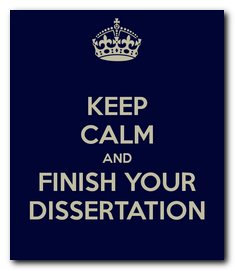 This is an optional section, depending on the subject of your dissertation. Subjects that involve any sort of scientific or quantitative investigation will require an account of the methods used. This account will include an explanation of how the research has been designed and implemented, and why the particular collection of data and the method of analysis has been chosen. The methodology might be qualitative, quantitative, or experimental, and it might involve gathering information and subjecting it to close scrutiny and analysis. Arts and humanities subjects tend not to have quasi-scientific methodologies, but rely on the close examination and analysis of materials and texts, followed by the your own persuasive arguments.
This is an optional section, depending on the subject of your dissertation. Subjects that involve any sort of scientific or quantitative investigation will require an account of the methods used. This account will include an explanation of how the research has been designed and implemented, and why the particular collection of data and the method of analysis has been chosen. The methodology might be qualitative, quantitative, or experimental, and it might involve gathering information and subjecting it to close scrutiny and analysis. Arts and humanities subjects tend not to have quasi-scientific methodologies, but rely on the close examination and analysis of materials and texts, followed by the your own persuasive arguments.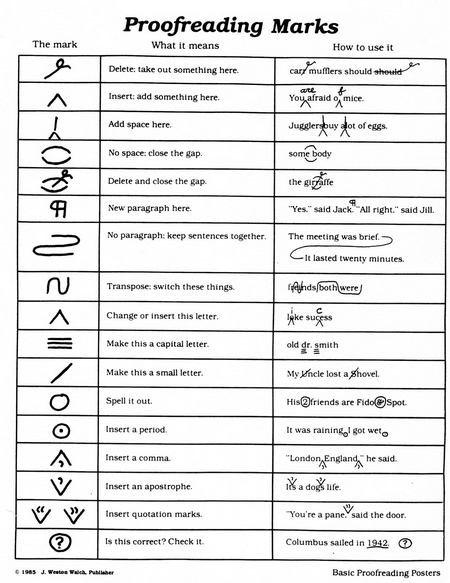
 Towards Electronic Journals
Towards Electronic Journals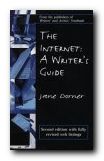 The Internet: A Writer’s Guide
The Internet: A Writer’s Guide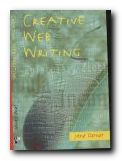 Creative Web Writing
Creative Web Writing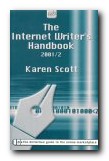 The Internet Writer’s Handbook
The Internet Writer’s Handbook Most people understand the rules. If you quote from somebody else’s work, you put the words in quote marks and acknowledge the source, either as part of your text or in an endnote or footnote. Details of
Most people understand the rules. If you quote from somebody else’s work, you put the words in quote marks and acknowledge the source, either as part of your text or in an endnote or footnote. Details of 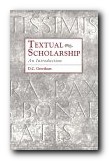 Jaques Barzun, On Writing, Editing and Publishing, Chicago: University of Chicago Press, 1986.
Jaques Barzun, On Writing, Editing and Publishing, Chicago: University of Chicago Press, 1986.